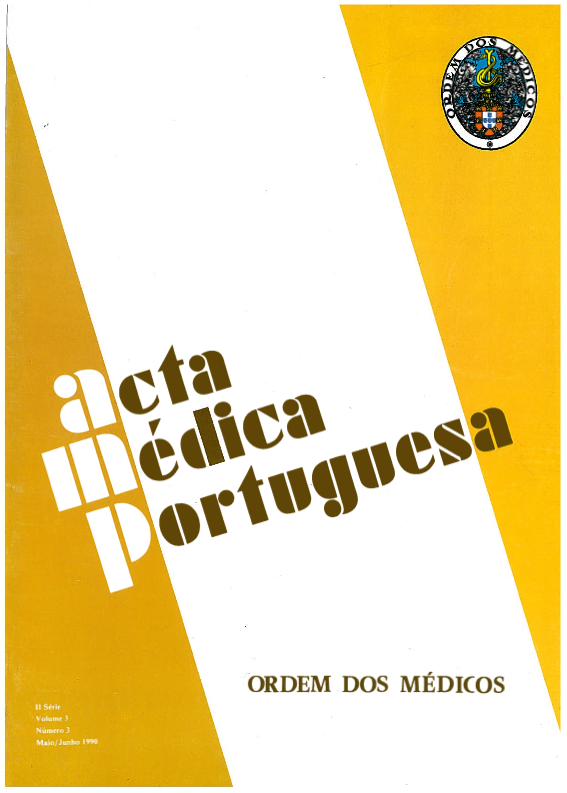Esfincterotomia endoscópica na coledocolitíase: análise de uma experiência de 530 intervenções.
DOI:
https://doi.org/10.20344/amp.4563Resumo
We report the experience of 530 consecutive cases of choledocolithiasis treated through Endoscopic Sphincterotomy (ES) between January 1980 and January 1988 (74% of total patients submitted to ES in the same period). 73% had more than 60 years and 47% more than 70 years. A slight majority (52%) had previous cholecystectomy (1/3 still with T-tube drainage) and the remaining had gallbladders insitu (lithiasic in 82%). Therapeutic goals (achieved drainage and complete stone removal) have been achieved in 95% of patients with a low immediate morbidity (9%) and mortality (1%). Delayed mortality, until 30th day (3%) includes 6 cases of obstructive cholangitis with sepsis, unaltered by emergent ES. Follow-up showed a 3% incidence of reintervention from restenosed ES. Patients with lithiasic gallbladder had a 33% cholecistectomy rate, mostly elective during first month post-ES. Our experience confirms ES as an efficient and safe routine treatment for choledocolithiasis. It should be the first choice in patients with previous cholecystectomy or alithiasic gallbladder and a largely applicable tool in those with associated gallbladder stones. Decision about post-ES cholecystectomy in these patients must be weighed on clinical grounds and according to surgical risk groups.Downloads
Downloads
Como Citar
Edição
Secção
Licença
Todos os artigos publicados na AMP são de acesso aberto e cumprem os requisitos das agências de financiamento ou instituições académicas. Relativamente à utilização por terceiros a AMP rege-se pelos termos da licença Creative Commons ‘Atribuição – Uso Não-Comercial – (CC-BY-NC)’.
É da responsabilidade do autor obter permissão para reproduzir figuras, tabelas, etc., de outras publicações. Após a aceitação de um artigo, os autores serão convidados a preencher uma “Declaração de Responsabilidade Autoral e Partilha de Direitos de Autor “(http://www.actamedicaportuguesa.com/info/AMP-NormasPublicacao.pdf) e a “Declaração de Potenciais Conflitos de Interesse” (http://www.icmje.org/conflicts-of-interest) do ICMJE. Será enviado um e-mail ao autor correspondente, confirmando a receção do manuscrito.
Após a publicação, os autores ficam autorizados a disponibilizar os seus artigos em repositórios das suas instituições de origem, desde que mencionem sempre onde foram publicados e de acordo com a licença Creative Commons









